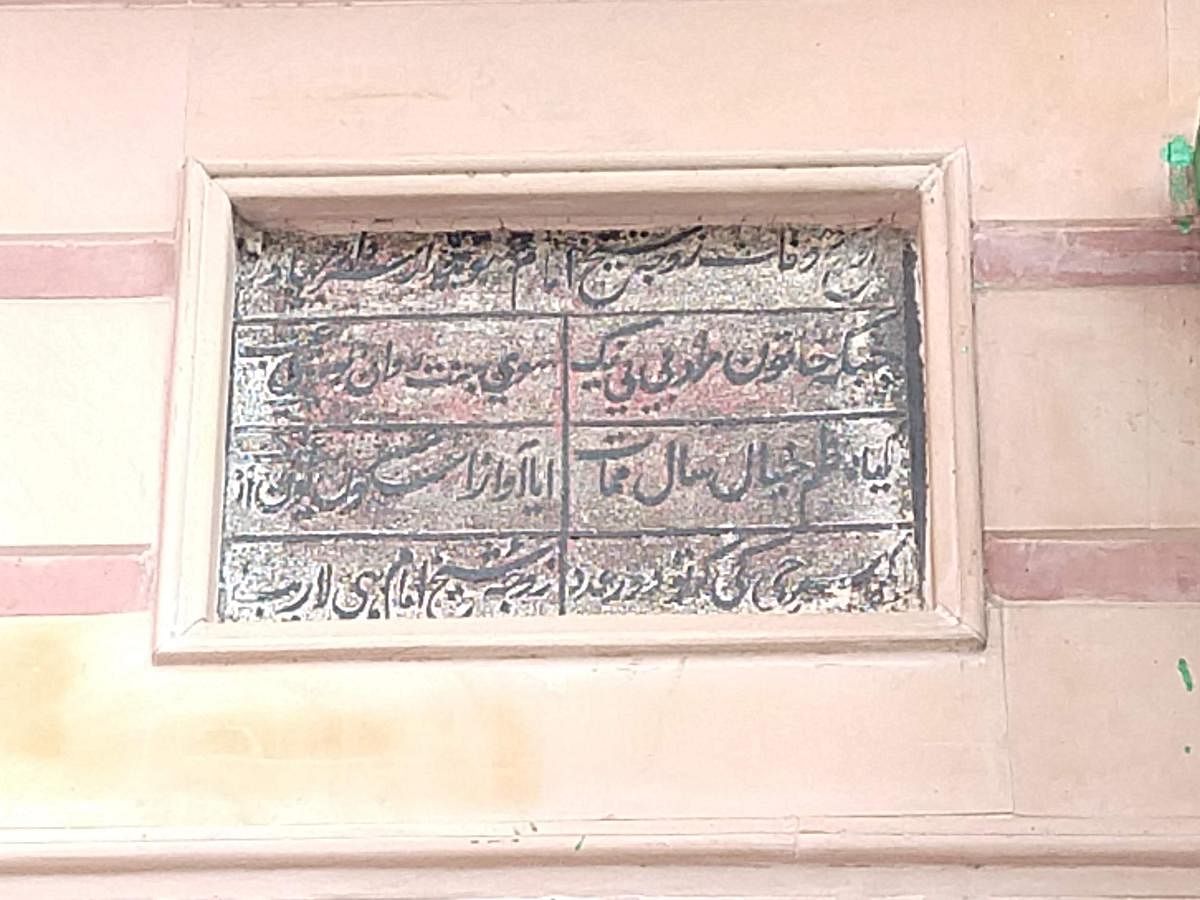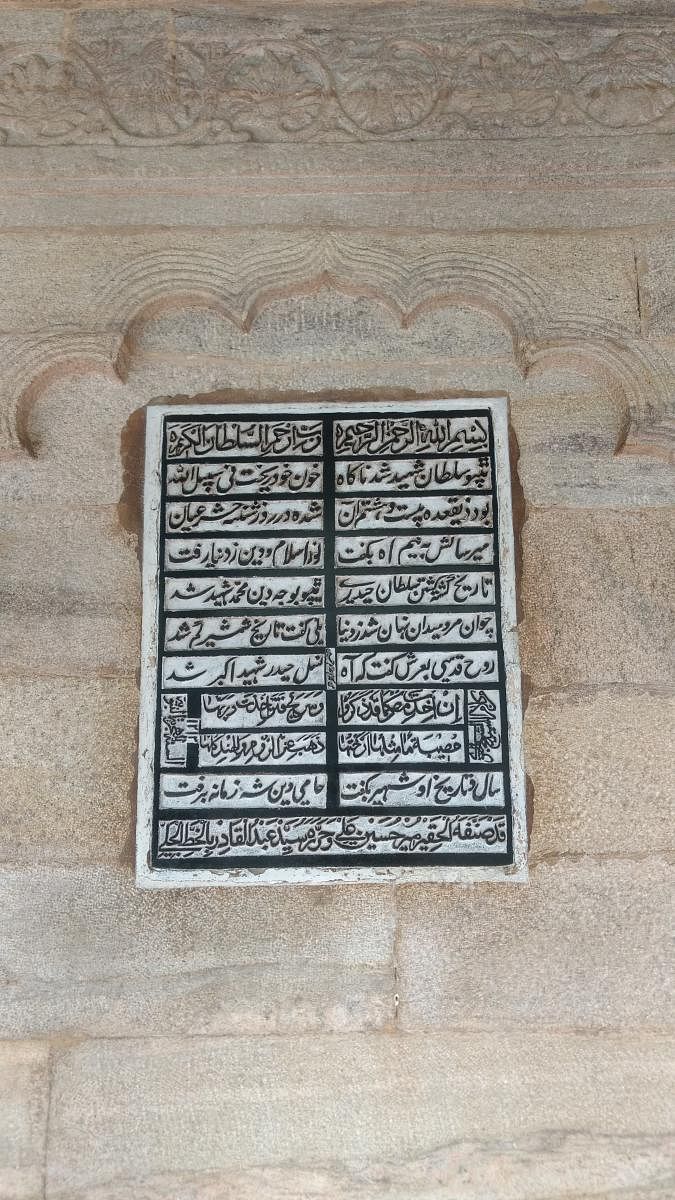

Epigraphical records in Kannada left behind by a host of dynasties dating all the way back to the Kadambas of Banavasi and the Chalukyas of Badami, are among our most important primary sources of Karnataka’s history, especially before the dawn of the second millennium CE.
Historians of Karnataka have long used these, in addition to local Sanskrit (and to an extent, Prakrit) inscriptions, for their research.
However, when it comes to Karnataka’s medieval history from the 1300s onwards, inscriptions in these languages do not suffice.
Among other developments, this period was marked by the emergence and growth of Indo-Islamic states in Karnataka, chief among them the Bahmanis of Bidar and Gulbarga, and the Adil Shahis of Bijapur.
Ruling over vast swathes of the Deccan, these Sultans commissioned works of architecture, literature, and art, all of which show strong local Deccani influences.
The Deccan’s various Sultanates used Persian and Arabic as their primary languages of official record and documentation, issuing hundreds of inscriptions in them. Kingdoms that arose later in Karnataka, including non-Muslim dynasties like the Rajas of Coorg and the Wodeyars of Mysore, would continue using Persian in inscriptions.
In the 1800s, Urdu gained currency as a formal language in its own right and began appearing in inscriptions.
All in all, it wouldn’t be an exaggeration to say that any well-rounded examination of Karnataka’s history from the medieval period onwards — its political upheavals, its social developments, its military conflicts, its economic conditions, its revenue systems, even its linguistic and literary currents — is incomplete without the numerous insights these inscriptions provide.
Problem
Thousands of Persian, Arabic, and Urdu epigraphs from all across India have been documented by the Archaeological Survey of India (ASI) and published in their various journals and publications on epigraphy, but sifting through these for specific examples from Karnataka can be inconvenient and time-consuming.
Experts at Kannada University, Hampi, a public-research university dedicated to “multidisciplinary and interdisciplinary research on various aspects of Karnataka and Kannada,” sought to remedy this gap in scholarship.
Realising the value of these inscriptions and their place in research on various facets of Karnataka’s history, the university oversaw the compilation and publication of a unique, first-of-its-kind work — a book featuring inscriptions from across Karnataka in these three languages, with details and summaries of their contents.
Titled Persian, Arabic, and Urdu Inscriptions of Karnataka, and published in 2001, this book’s compilation was overseen by Dr M Y Quddusi, Deputy Superintending Epigraphist, Arabic and Persian Department, ASI.
The project was spearheaded by the university’s former vice-chancellor, the late M M Kalburgi, a renowned epigraphist in his own right.
In the book’s foreword, Kalburgi — himself born less than two hours from the former Adil Shahi capital of Bijapur — states that a driving motive behind the book’s publication was a desire to remedy the institutional neglect of epigraphical research in Arabic, Persian, and Urdu in Karnataka. The book features 429 inscriptions in Persian, Arabic and Urdu, out of close to 800 inscriptions identified in these languages in Karnataka.
According to the introduction, these inscriptions are drawn from a wide range of find sites, “both on religious and secular buildings like forts, structures of public utility, tombs, mosques, ldgahs etc.
Northwestern Karnataka in particular, as the seat of Karnataka’s early Sultanate rule, boasts of a particularly high concentration of these inscriptions, with many of them directly pertaining to royal affairs and military conquests.
The book’s presentation is designed for wide potential reach.
Each entry, featuring information on the inscription’s find site, its district and taluk, as well as its translation, is bilingual in English and Kannada, with the translation appearing in Urdu too. In addition, the original text of the inscription is provided at the bottom of the entry, for cross-
reference.
Many of these inscriptions refer directly to important events in Karnataka’s history, events with far-reaching effects.
For example, a Persian inscription from Bijapur dating back to 1320-21 CE, mentions by name a local official in the service of Mubarak Shah Khalji of the Delhi Sultanate. This inscription is extremely significant from a historical perspective, since this marks the earliest record of direct Sultanate rule in Karnataka, after Delhi’s annexation of the Yadavas of Devagiri (modern Daulatabad, Maharashtra).
An Arabic and Persian inscription from Basavakalyana records the construction of a mosque in 1323 CE, under the reign of Ghiyasuddin Tughlaq. This corresponds to the Delhi Sultanate’s renewed expansionism in the Deccan.
A 1353-54 inscription from Kalaburagi, less than three decades after the Tughluq-era Bidar inscription, records in Persian the construction of a mosque under the reign of Alauddin Bahman Shah.
This was less than a decade after the establishment of the Deccan’s first Sultanate in 1347, the Bahmanis, marking a break with Delhi and the shift of local political power back to the Deccan.
Later inscriptions show the rise and fall of new kingdoms, and their shifting fortunes as strategic forts changed hands. Inscriptions by the Bahmanis are replaced by ones issued by the Barid Shahis of Bidar and the Adil Shahis of Bijapur, their successor states.
A 1618-19 Persian inscription from Bidar marks the conquest of Ibrahim Adil Shah II over the Barid Shahis. After the fall of Bijapur to Mughal forces in 1686, Mughal inscriptions begin to appear, starting with ones issued by Aurangazeb. From the later centuries, many inscriptions belong to the reign of Hyder Ali and Tipu Sultan of Mysore, as well as the Nizams of Hyderabad.
In the city
The book also includes numerous inscriptions from across Bengaluru. The most exquisite of these is a Persian poem from Tipu Sultan’s Summer Palace, commemorating in flowery verse the construction of the palace in 1781. There are also numerous inscriptions from the city’s Cantonment area, with its high concentration of Urdu speakers.
This volume by the university marks a decisive step forward in making sources on Karnataka’s history from the medieval period onwards more accessible to researchers; subsequent volumes, hopefully, made available in the years to come, will help expand this through more inscriptions.